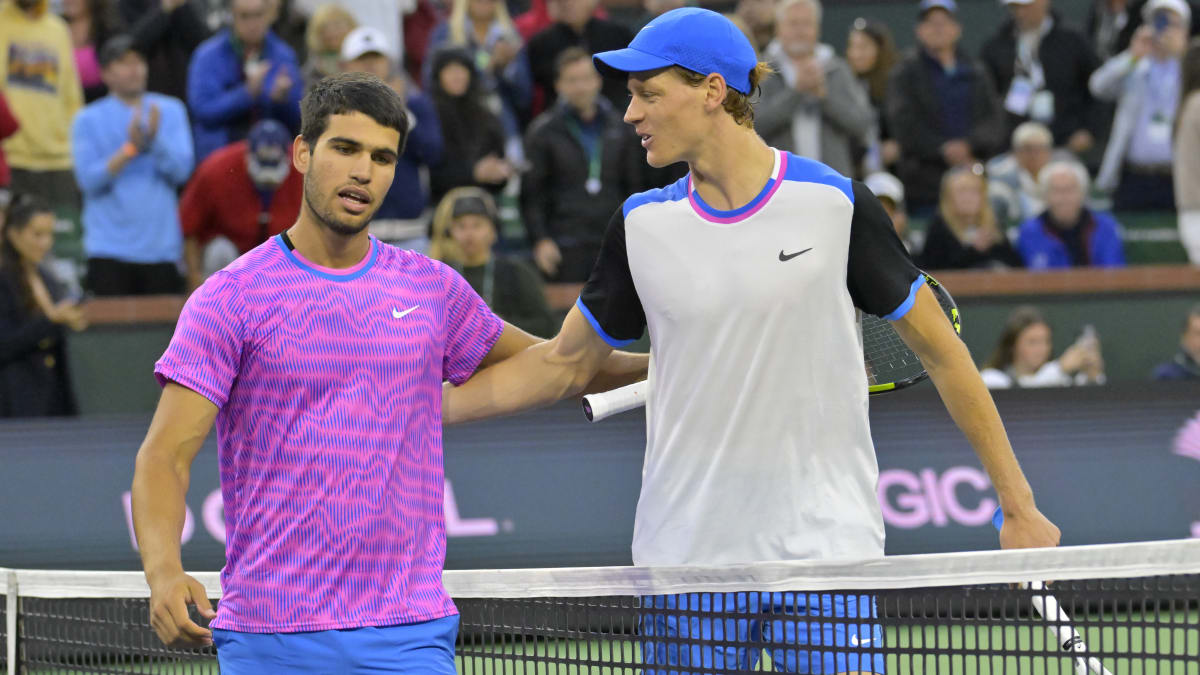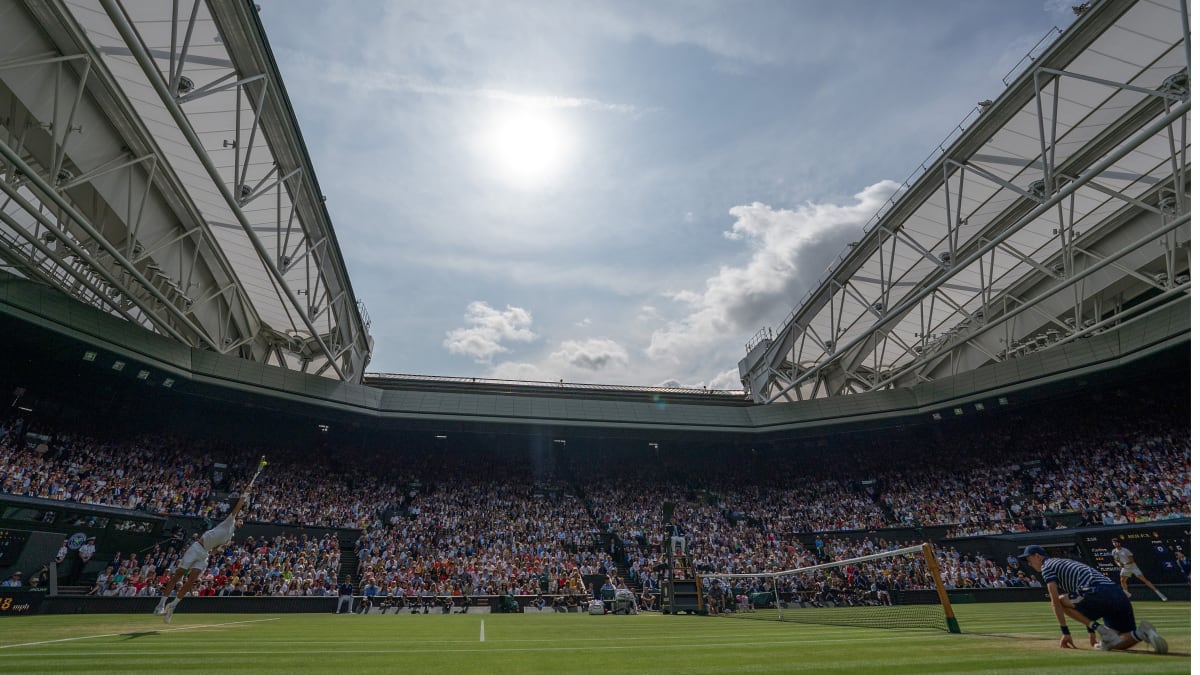Spain’s Carlos Alcaraz (20) may have beaten Italy’s Jannik Sinner (22), the latest iteration of a swelling and textured rivalry that now stands at 4–4. But the fiercest battle to play out last week in Indian Wells, Calif., did so in boardrooms and conference rooms.
Andrea Gaudenzi, chairman of the ATP, announced that he had officially secured a $1 billion commitment from Saudi Arabia to bankroll a streamlined tennis ecosystem. The hitch: a 1000-level event would be added to the calendar, to be staged in The Kingdom.
And on the other side of the net … a proposal for a Premier Tour—put forth by the four majors, presenting an uncharacteristically united front—outlining a new professional tennis model offering:
- The four majors.
- Ten other events: 96-player draws; men and women; equal prize money; all held outdoors.
- A team event.
- Year-end finals for both men and women held at the same site.
- Guaranteed off weeks before and after majors and a minimum two-month offseason.
- A PGA-style tour, open to the top 100 or so players; with a developmental tour open to players ranked roughly 101–300.

Jayne Kamin-Oncea/USA TODAY Sports
For a sport that, historically, has done change the way the royal family does transparency, this was a jarring disruption in the truest sense. For starters, it would mean the end of the WTA and ATP tours as they have existed for decades; and the death or demotion of more than 100 tournaments that currently dot the calendar, from Dallas to Doha.
Credit/blame for the Premier Tour generally goes to Australian Open chieftain Craig Tiley, who was moved to act dramatically, threatened as he was by a Saudi event in January that would squelch Aussie Open run-up momentum. Likely because Tiley, a born deal-maker, can polarize within the sport, it is now Lew Sherr, the USTA’s chief executive officer and executive director, who has become the front-facing figure for the Premier Tour.
Sherr spoke with Sports Illustrated this week about the Premier Tour, what it is and isn’t and what problems it addresses.
The following has been lightly edited for brevity and clarity.
Jon Wertheim: Let’s start broad and then get to specific questions. What are you presenting?
Lew Sherr: So it all starts from a proposition that tennis is an attractive sport, but that it underperforms commercially, which is creating challenges to support athletes and for the sustainability of tournaments. I don’t think that’s news to anybody in the industry.
We’ll go back to 2021. The [seven tennis stakeholders] commissioned Boston Consulting Group to understand what the issues were in the sport and what the opportunities might be. And all of that research—which included 5,000 tennis fans around the world surveyed—pointed to the fact that tennis, while broadly popular, had 70% of tennis fans only engaging with the sport through the four majors.
So you’re the fourth most popular sport in the world, but 70% of those fans are only watching the four events during the year. And the feedback also indicated that events during the season lack consequence. Fans have a hard time following the narrative. We dilute our own product. We compete with our own product. You might have six events in a given week. Fans struggle to know where they should be watching. Why is Sinner playing in Rotterdam and Alcaraz is somewhere in South America? The solution that came back from all of that fan research? The best way to present the sport to fans was in a format where the best players are playing in a prescribed sort of elite season. At the same time, you’re accounting for player health, rest, peaks in performance.
JW: That takes care of fans and players. What about tournaments?
LS: From a tournament perspective, there are just too many tournaments that are not viable. And because they’re diluted, they’re competing with one another. So we try to address the structural impediments in the system and bring forward a more expansive, a more holistic solution that would tackle all of that. … Ten tournaments [out of roughly 140] drive 80% of all of the economics. Four of them are the Grand Slams plus six others. So it’s unbelievably concentrated. I don’t think I’m telling you anything that you haven’t reported, that you didn’t know. So what we set out to do, the slams together, unified to say, if we can lean in and try to address the structural issues that the sport is facing, maybe there’s a new opportunity.
JW: If tennis’s value today is X, what are you anticipating the valuation to be if all goes to plan?
LS: We estimate—and the consultants—that number is roughly a billion dollars in annual economic lift. Now that doesn’t happen overnight. You’ve got to build to that and there are contracts and cycles. But it is substantial. We’re talking about a successful sport that still has huge, huge economic potential.
JW: The biggest objections to me would seem to be, 1) the other guys have a bag with a billion dollars in it. You have consultants’ projections. 2) Everyone thinks the sport is under-monetized. Everyone thinks it’s confusing and the calendar is too crowded. But there are dozens and dozens of 500- and 250-level events that don’t seem to fit in.
LS: Our view is that billion is redistributed below to make sure players are earning sustainable for success. It’s a reimagination. We’ve gotta separate ourselves from what exists today. The analogy with what the ATP sort of developed with the Saudis, I guess is a bit of an apples and oranges. These are not, these are not mutually exclusive opportunities.
JW: What are you telling that guy that’s dumped a lot of money into his 500-level event?
LS: We are prioritizing creating sort of sustainability at the lower levels of our sport, we think there is an enormous amount of growth. Part of our proposition: there is revenue that has to be redistributed to other events. And we think there is an opportunity to create a much more viable proposition. There are 10 events that are driving 80% of the revenue in our sport. That’s not sustainable. We need to get to a sustainable model.
JW: I’m hearing four majors and 10 events that will be 96 draws; men and women; all outdoors; and the 10th is likely a grass event pre-Wimbledon. Accurate?
LS: Yeah, our vision for the calendar reflects four Grand Slams. We think 10 is the appropriate number of Premier Tour events. I can’t overstate the importance of all combined, all equal prize day one for the sport operating entity combined. And truly creating a gender-neutral sport is absolutely paramount for us and a critical sort of piece of this thing. We also think there is an opportunity for an international team event that would fit within this calendar; and then a year-end combined event.
JW: I’ve heard two weeks of protection pre and post the four majors.
LS: There’s absolutely one week. The other piece: we’re prescribing specific play-down weeks. So we know that competition matters. And if you’re a lower-ranked player, you may not be getting enough match play. If you lose early in a model like this, there may not be enough matches for you to be at your peak performance, so we’ve identified a series of weeks over the course of the year where you could drop down to get more match play, drop into what we think would be sort of the highest level of contender tour events.
JW: Your [model] is avoiding the sportswashing issue in a way that your competing offer is not. Would you take money from Saudi Arabia if they decided to reallocate with you?
LS: What I will tell you is we’ve had a conversation with an external stakeholder about investment in this. We want to get this format right. We don’t doubt that there will be a number of people lining up to potentially want to invest in this. We’re not sure that we need external investment. We might be able to do this with some sanctioned sales. So it may not require equity. But what we also know is it’s an incredibly attractive sport. And you’re seeing increased investment in sport. And we’re good.
We want to focus on delivering the product in the right way to create something that’s sustainable. That’s right for fans, that’s consistent with what we set out to do at the outset. I won’t exclude or include anything at this stage. But right now we, we’ve not been pursuing external investment.
JW: What do you see as the biggest challenge to this getting done?
LS: This is a massive reimagination of the way the sport is presented and change is hard. And we want to get it right and we’re taking our time and we’re working with stakeholders to make sure that we’re thinking through all of these questions that you’re asking and others are asking, because that stuff is important. Ultimately it’s going to require change from within and that’s really hard, right?
JW: The tours, as we know them, have outstanding media rights contracts. They have venue contracts. They have vendors. They have pension plans. They’ve got liability policies. What happens if there is no ATP and WTA as we know it? And can you do it all by Jan. 1, 2026?
LS: I think putting a date on this is really hard. If that needs to happen [Jan. 1, 2026] would be achievable. My guess is you will see a transition period, but we’re up to conversations we’ve had with, with players, the conversations we’ve had with tournament owners.
Look, everybody gets it, right? I think you probably would agree. This is a better presentation of the sport. However, the how you get there is where the complexity lies, right? And, and how long does that take? And what has to happen to get there and making sure that we don’t compromise to the point that you lose the integrity of the vision in order to get there.
So it’s a process and, and we are committed. We’re working as quickly as we can work, but we’re not willing to sacrifice getting it right. We’re not trying to take some shortcuts or band-aids to get to something that ultimately is not going to serve us well in the long term.














